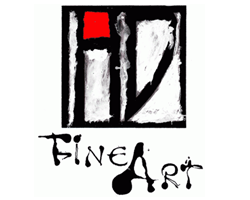Product Description
Hank Pitcher, “Life Guard Tower”, Oil on canvas c. 2002


HANK PITCHER (b. 1949) U.S.A.
“Life Guard Tower” c. 2002
Oil on canvas
Signed (on back)
For more information see: Hank Pitcher Surf, exhibit. cat. (Santa Barbara: Sullivan Goss Gallery, 2003); Surfboard Wax – A History, Jefferson “Zuma Jay” Wagner (Atglen, PA: Schiffer Publishing Ltd., 2005).
Canvas H: 15 7/8” x W: 19 7/8”
Framed: H: 21 3/8” x W: 25 3/8”
Pitcher’s surfboard paintings are the symbol of California beach culture…strong, definite, positive and euphoric statements about life in California. The surfboard’s power as totem is seen in its power to convey identity: surfer, Californian, Hank Pitcher. All are identifiable from this symbolic representation. Hank Pitcher is the voice of California culture. At the beach, in the surf, approaching the foothills, in the mountains, on the spit of Point Conception, in the crags of Big Sur, at a beach campfire in Santa Barbara, Pitcher paints the icons of California’s culture.
Hank Pitcher’s paintings are grounded in a particular sense of place. He was born in Pasadena, California on July 20, 1949, but his family moved to Isla Vista, near Santa Barbara, when he was two years old. When they came to Isla Vista it was an outpost on the beach, and Goleta was a farm town where kids rode their horses down the avenue to buy candy at the store. He was a football star at San Marcos High School and was recruited by big-name universities. Instead of football, he chose to attend the College of Creative Studies, an alternative program within the University of California at Santa Barbara (UCSB) where he now teaches painting. He splits his time between painting and surfing, pursuing each with the commitment and energy of a linebacker.
Hank Pitcher, “Life Guard Tower”, Oil on canvas c. 2002
For more information on Robert Loughlin see: http://www.nytimes.com/2015/10/02/fashion/mens-style/the-legacy-of-robert-loughlin-artist-behind-the-brute.html?mwrsm=Email
GIOVANNI BATTISTA FILOSA (1850-1935) Naples, Italy
“In the Garden” 1884
Watercolor, gilt frame and filet with silk mount.
Signed: G Filosa '84
***Filosa exhibited at the Esposizione Internazionale d'Arte della Città di Venezia 1895 – La Biennale di Venezia, Venice
An extremely fine and exquisitely painted watercolor “In the Garden” by the Italian artist Giovanni Battista Filosa (1850-1935). It is a radiant painting with a wonderful subtle coloration and very charming late 19th century “en plein-air” imagery. Filosa's technique is similar in quality to the work of the 19th Century Pre-Raphaelite watercolorist, Albert Moore. Gilt frame and filet with silk mount. Signed: G Filosa '84 Filosa exhibited at the Esposizione Internazionale d'Arte della Città di Venezia 1895 – La Biennale di Venezia, Venice
Watercolor: H: 7 1/2″ x W: 5 1/4″
Framed: H: 14 1/2″ x W: 12″
Price: $11,500
